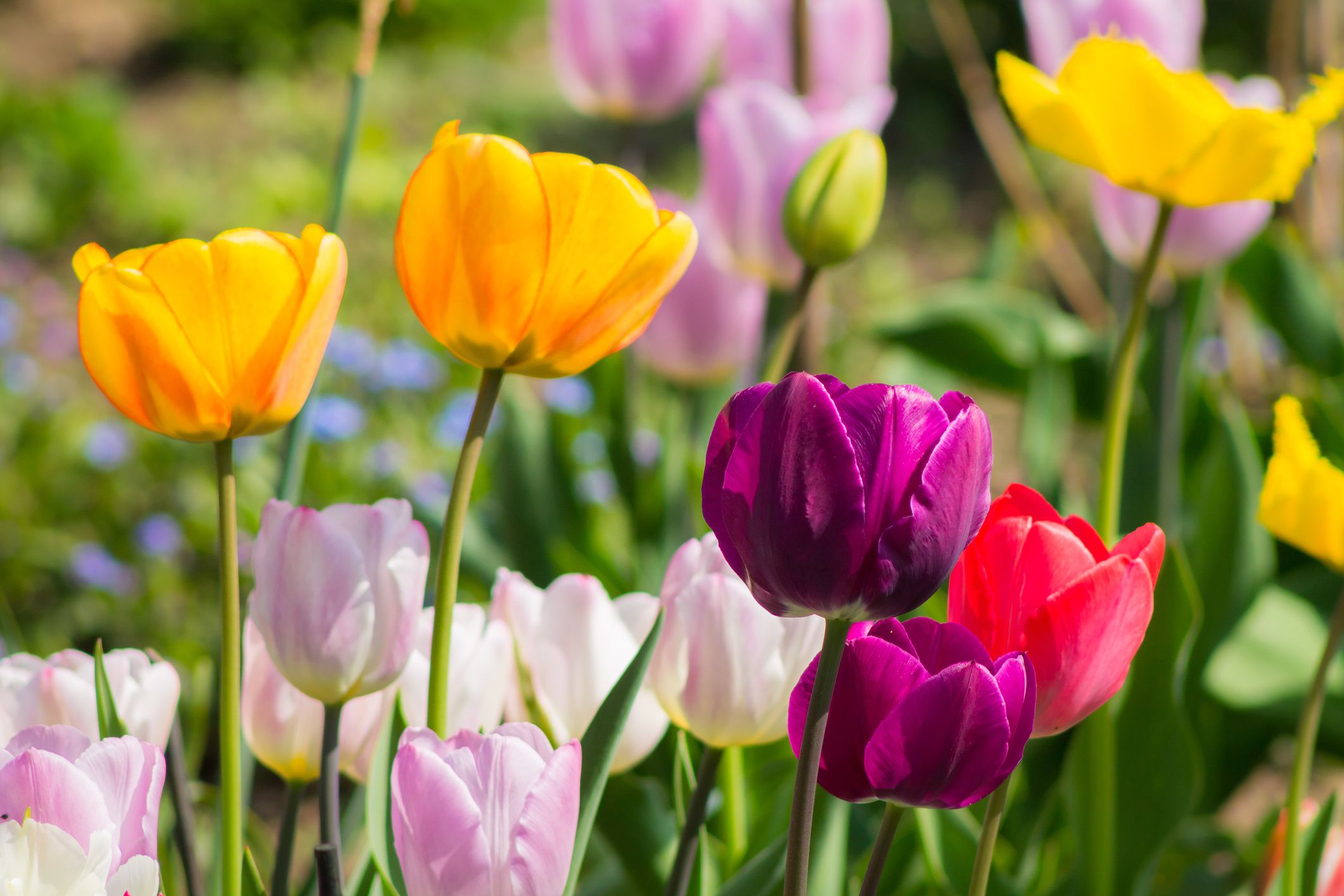Home>Types of Gardening>Ornamental Gardening>What Does Planting Tulips Mean


Ornamental Gardening
What Does Planting Tulips Mean
Published: August 29, 2023
Discover the symbolic meaning behind planting tulips and explore the world of ornamental gardening. Enhance your garden with these beautiful and vibrant flowers.
(Many of the links in this article redirect to a specific reviewed product. Your purchase of these products through affiliate links helps to generate commission for Chicagolandgardening.com, at no extra cost. Learn more)
Table of Contents
Introduction
Welcome to the enchanting world of ornamental gardening, where nature’s beauty is brought to life through meticulous cultivation and creative design. Among the diverse array of flowers and plants that capture our attention, tulips reign supreme as one of the most beloved and iconic ornamental flowers. These vibrant, cup-shaped blooms have captivated the hearts of gardeners and flower enthusiasts alike for centuries.
Originating from the mountainous regions of Central Asia, tulips have a rich and fascinating history that spans continents and cultures. From their humble beginnings as wildflowers in the foothills of the Himalayas, tulips have since captivated the attention of emperors, artists, and plant enthusiasts around the world.
Throughout history, tulips have acquired various meanings and symbolism in different cultures and contexts. From representing prosperity and wealth to symbolizing love and rebirth, the universal appeal of tulips lies in their vibrant colors and elegant forms.
Beyond their visual appeal, planting tulips holds deeper meaning and significance for many individuals. Whether it’s as a symbol of love and affection, a representation of personal growth and renewal, or a connection to spiritual or religious beliefs, planting tulips allows us to forge a deeper connection with nature and ourselves.
In this article, we will explore the historical significance of tulips, their symbolism in different cultures, and the spiritual and personal meaning associated with planting these remarkable flowers. Join us on this journey of discovery as we unravel the captivating world of ornamental gardening and the profound symbolism of planting tulips.
Historical Significance of Tulips
The history of tulips can be traced back thousands of years, originating in the mountainous regions of Central Asia. These beautiful flowers first caught the attention of the Persian empire, where they were revered for their enchanting beauty and delicate charm. The Persian word for tulip, “dulband,” means turban, which refers to the shape of the flower’s petals.
In the 16th century, tulips made their way to the Ottoman Empire, present-day Turkey, and quickly became a symbol of wealth and prestige. The Ottomans adored the flower, and tulips became an integral part of their culture and art. The extraordinary demand for tulips resulted in a phenomenon known as “tulip mania,” where prices soared to astronomical levels, and the trade of tulip bulbs became a hot commodity.
During the Dutch Golden Age in the 17th century, tulips found their way to the Netherlands through diplomatic channels and became wildly popular. The Dutch cultivated tulips on a large scale, leading to a period of intense tulip speculation. This speculative frenzy, known as “Tulipmania,” saw tulip bulbs being sold for exorbitant prices, with some rare varieties being considered more valuable than gold.
Today, the Netherlands remains a global hub for tulip cultivation and exports, with their famous Keukenhof Gardens showcasing over seven million tulips each year. The Dutch love affair with tulips has cemented their cultural and historical significance, making them an enduring symbol of the country.
Throughout history, tulips have also been embraced by various cultures for their symbolic meanings. In Persian culture, tulips represent the perfect love and divine longing. In Turkish tradition, red tulips are associated with passionate love and desire, while yellow tulips symbolize cheerful thoughts and sunshine.
The historical significance of tulips extends beyond their cultural and artistic appeal. These flowers have witnessed the rise and fall of empires, captured the imaginations of poets and artists, and stood as a testament to the ephemeral beauty of life.
Join us as we delve into the symbolic meanings of tulips in different cultures and explore the spiritual and personal significance of planting these remarkable flowers.
Symbolism of Tulips in Different Cultures
Tulips hold a myriad of symbolic meanings in different cultures around the world. The vibrant and diverse colors of tulips, coupled with their graceful form, have given rise to a variety of interpretations that transcend borders and languages.
In Persian culture, tulips are strongly associated with love and passion. They are seen as a representation of perfect love and are often gifted as a gesture of affection. The red tulip, in particular, symbolizes deep passion and romantic longing.
In Turkish tradition, tulips carry both positive and negative symbolism. Red tulips are seen as a declaration of love and desire, while yellow tulips symbolize happiness and cheerful thoughts. However, black tulips are associated with death and mourning.
In the Netherlands, tulips are synonymous with the country’s identity. The variety and abundance of tulips in Dutch landscapes and gardens make them a symbol of national pride and cultural heritage. Tulips are also associated with the arrival of spring in the Netherlands, where the blooming of these flowers is celebrated with festivals and events.
In Victorian England, tulips carried messages of love and affection through the language of flowers. Different colors of tulips conveyed different sentiments, with red tulips symbolizing passionate love, pink tulips representing affection and caring, and yellow tulips symbolizing cheerful thoughts and sunshine.
The symbolism of tulips in Asian cultures varies as well. In Japanese culture, tulips represent life and are often associated with the coming of spring. They are seen as a symbol of rebirth and renewal. In Chinese culture, tulips are known for their elegance and delicate beauty, often representing the perfect lover.
With their wide array of colors, tulips can be a versatile symbol in various cultural contexts. White tulips, for example, represent purity and innocence, making them a popular choice for weddings and religious ceremonies. Purple tulips symbolize royalty and luxury, while orange tulips represent energy and enthusiasm.
It’s fascinating to explore how tulips have become an integral part of cultural symbolism and traditions across different societies. By understanding the meanings attached to tulips in various cultures, we can gain a deeper appreciation of their significance and the universal admiration they evoke.
Spiritual and Religious Meaning of Planting Tulips
Beyond their aesthetic beauty and cultural symbolism, the act of planting tulips also holds spiritual and religious significance for many individuals. Throughout history, tulips have been associated with various spiritual beliefs and religious practices.
In Islamic culture, tulips have a special place and are often associated with spirituality. They are seen as a symbol of divine perfection and beauty. It is believed that the tranquility and serenity of tulips can uplift the spirit and connect individuals to a higher power.
In Christianity, tulips are often seen as a representation of resurrection and renewal. Their vibrant colors and stunning blooms are seen as a testament to the power of God’s creation and the beauty that can arise from even the harshest of conditions. Planting tulips can be seen as a way to connect with the divine and embrace the spiritual journey of growth and transformation.
In Sufism, a mystical branch of Islam, tulips are cherished as a symbol of spiritual enlightenment and divine love. They are seen as a metaphor for the soul’s journey towards union with the divine. Planting tulips can be seen as a spiritual practice, a way to cultivate inner growth and realize one’s connection to the divine essence.
For many individuals practicing holistic or nature-based spirituality, planting tulips is a way to honor the cycles of nature and connect with the Earth’s energy. Tulips represent the arrival of spring, the season of rebirth and growth. By planting tulips, individuals can align themselves with the natural rhythms of the Earth and tap into the spiritual energy of renewal and transformation.
Planting tulips can also be a meditative and reflective practice. It allows individuals to connect with nature, engage in mindful cultivation, and embrace the process of growth and transformation. The act of planting and tending to tulips can be seen as a metaphor for personal development and self-discovery.
Ultimately, the spiritual and religious meaning of planting tulips varies among individuals and communities. Whether as a way to connect with the divine, honor a specific religious tradition, or simply embark on a personal journey of growth and reflection, planting tulips can be a deeply meaningful and spiritual experience.
Planting Tulips as a Gesture of Love and Affection
One of the most common reasons for planting tulips is to express love and affection. These vibrant flowers have long been associated with romance and are often used as a powerful symbol of deep emotional connections.
For lovers, planting tulips can be a heartfelt gesture to convey love and affection to their partners. The act of planting tulips together not only allows couples to create a shared experience, but it also symbolizes the growth and nurturing of their relationship. The beauty and vibrancy of tulips serve as a reminder of the love and joy that two individuals can cultivate together.
Tulips are also popular choices for gifts of love and affection. Gifting someone a bouquet of tulips can speak volumes about your feelings towards them. Red tulips, in particular, symbolize passionate love, while pink tulips represent affection and care. By presenting tulips, you are not only offering a stunning floral arrangement but also a heartfelt expression of your love and appreciation.
Planting tulips can also be a way to honor and remember loved ones who are no longer with us. Some people plant tulips in memory of those they have lost, creating a beautiful and lasting tribute. This act of remembrance allows individuals to celebrate the love and connection they shared with their loved ones and find solace in the beauty of the blooming flowers.
Additionally, tulips can be used to express love and appreciation towards friends and family members. By gifting tulips or planting them in someone’s garden, you can show your affection and gratitude for the meaningful relationship you share. It is a simple yet meaningful way to strengthen bonds and convey feelings of love and appreciation.
Planting tulips as a gesture of love and affection goes beyond words. It is a tangible action that embodies the emotions we hold for others. The act of planting, nurturing, and witnessing the growth of these beautiful flowers can serve as a constant reminder of the love that exists between individuals.
So, whether you are planting tulips for your significant other, gifting them to a loved one, or using them as a symbol of remembrance, embracing the beauty and symbolism of tulips is a beautiful way to express love and affection.
Planting Tulips as a Symbol of Renewal and Hope
Tulips are often seen as a symbol of renewal and hope, representing the arrival of spring and the rejuvenation of life. The act of planting tulips can serve as a powerful reminder of the cyclical nature of existence and the potential for growth and transformation.
When winter’s frost begins to wane, tulips emerge from the ground, bringing vibrant colors and fresh energy to the landscape. Their blossoming signifies the end of a dormant period and the beginning of a new season. Planting tulips in your garden or outdoor space can serve as a visual representation of this renewal, igniting feelings of optimism and hope.
Tulips inspire us to embrace change and have faith in the process of growth. They teach us that even after periods of darkness and stillness, there is always the potential for beauty and renewal. Planting tulips can symbolize our willingness to let go of the past and embrace new beginnings.
Many people find solace and hope in planting tulips as a form of therapy or as a means to heal and overcome challenging times. The act of tending to these delicate flowers can provide comfort and a sense of purpose. It allows us to focus on a positive future and to believe in the possibility of new beginnings.
Planting tulips can also be a source of hope for the future. As we sow the seeds and watch them grow, we are reminded that even small actions can have a significant impact. Just as the tiny tulip bulb transforms into a magnificent flower, we too can undergo personal growth and achieve remarkable things.
The symbolism of tulips as a symbol of hope can be especially powerful during times of adversity or uncertainty. The bright colors and delicate petals of tulips offer a visual reminder that there is beauty and potential even in the midst of difficult circumstances.
Whether it’s planting tulips in your garden, potting them indoors, or participating in community gardening projects, the act of growing and nurturing tulips can serve as a powerful symbol of renewal and hope. It reminds us of our ability to bloom and flourish despite life’s challenges and inspires us to embrace the optimism and possibilities that lie ahead.
Planting Tulips for Personal Growth and Self-Reflection
Beyond their beauty and symbolic significance, planting tulips can also serve as a means for personal growth and self-reflection. The process of planting and caring for tulips can offer valuable lessons and opportunities for introspection.
Planting tulips requires patience, diligence, and attention to detail. It teaches us the importance of nurturing and tending to something in order to facilitate its growth. By engaging in the gardening process, individuals can develop a sense of responsibility and commitment, qualities that can be applied to other aspects of life.
As tulips bloom, they go through various stages of growth. Planting tulips can be a metaphor for personal transformation and the realization that growth takes time. It reminds us that just as tulips need the right conditions to flourish, we too require the necessary elements – such as self-care, patience, and nourishment – to thrive and reach our full potential.
Planting and observing tulips can also provide moments of mindfulness and reflection. As you tend to the flowers and witness their growth, you may find yourself immersed in the present moment, connecting with nature and experiencing a sense of peace and tranquility. This can be a valuable opportunity to reflect on your own personal journey and gain insight into inner thoughts and emotions.
Tulips, with their vibrant colors and graceful blooms, can inspire creativity and spark imagination. The act of planting tulips can serve as a creative outlet, allowing individuals to design and arrange their gardens in unique and artistic ways. This creative expression can foster a sense of fulfillment and provide an avenue for self-discovery.
Furthermore, the process of planting tulips and watching them blossom can evoke a sense of accomplishment and pride. The act of nurturing a living thing and witnessing its growth can boost self-esteem and foster a deeper connection to the natural world.
Tulips can also serve as a reminder of the impermanence of life. Their blooms, though stunning, are fleeting and transitory. This realization can inspire individuals to embrace the present moments and appreciate the beauty that surrounds them.
By planting tulips for personal growth and self-reflection, individuals can gain a deeper understanding of themselves and cultivate a sense of connection to the natural world. It is an opportunity to nurture not only the flowers but also their own personal development and journey of self-discovery.
Conclusion
Planting tulips is a beautiful and meaningful endeavor that offers a multitude of benefits and insights. From their historical significance and cultural symbolism to their spiritual and personal meanings, tulips captivate our hearts and inspire us in numerous ways.
Through the act of planting tulips, we connect with nature and the cycles of life, witnessing the renewal and transformation that comes with each bloom. Tulips serve as a reminder of love and affection, allowing us to express our emotions and deepen our connections with others. They also symbolize hope and renewal, reminding us that even in challenging times, there is the potential for growth and a brighter future.
Furthermore, planting tulips can be a deeply introspective experience, offering moments of self-reflection and personal growth. The act of nurturing these flowers teaches us patience, commitment, and the importance of self-care. It invites us to marvel at the beauty of the present moment and appreciate the impermanence of life.
Whether you plant tulips in your garden, gift them to a loved one, or engage in communal gardening projects, the act of planting tulips becomes an invitation to create, to tend, and to connect with nature and ourselves on a deeper level.
So, embrace the magic of ornamental gardening and indulge in the beauty and symbolism of planting tulips. Let them inspire you, comfort you, and fill your life with vibrant colors and heartfelt meaning. May your journey with tulips be a source of joy, growth, and connection to the natural world.






